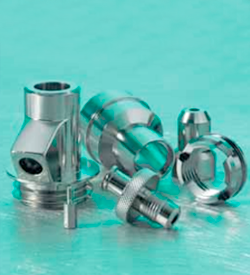
Advancements in fabrication technology have developed dramatically in the past decades, with precision tube cutting and deburring services necessary to meet the demanding application requirements for components utilized in the field of medicine, electronics, semiconductors, and aerospace industries.
Unfortunately, as stainless steel is cut and shaped, the process creates burrs, tiny nodes, particle residue, and sharp edges on the metal surface that are not only hazardous to those handling the parts but can affect the durability of finished products if not removed. These burrs may not even be detectable or visible to the naked eye, which could make them easily overlooked. However, they are there and they must be removed. If not, burrs left on metal surfaces can severely impede the performance of components over time. They can cause issues in machining processes that result in erroneous measurements, or additional friction and wear, and even fracturing of parts.
What Is Deburring?
Removal of burrs from the metal surface is essential for product performance. In the world of fabrication, deburring is a cleaning process in which unwanted material left on metal surfaces is removed with specialized tools or machinery. For stainless steel components to work efficiently and effectively, they must be deburred.
Metals such as stainless steel go through a wide range of manufacturing processes to be formed into a serviceable component. Materials are subjected to machining operations that may grind, mill, cut, drill, or turn them. All of these operations can leave behind three types of burrs on the surface of the metal: Poisson, rollover, and breakout. These unwanted imperfections must be removed through the act of deburring.
Reasons for Deburring
The necessity of deburring relates to
- Performance
- Functionality
- Effectiveness
- Safety
- Durability of components
If the burrs are not removed from metal objects after forming, they can cause a host of issues and problems downstream. Problems such as improper seating of fasteners and assembly, stress cycles are reduced, fatigue life is shortened, increased stress can decrease resistance to fracturing and cracking, risk of corrosion increases, increased friction and heat, static discharges, poor lubrication and all-around unsafe handling.
Deburring eliminates the risks that components are subjected to during the manufacturing process. By cleaning up and smoothing the edges of the metal after forming prevents hazards and accidents, allows and improves the product capability, improves the product’s ability to work properly, and enhances the visual appeal.
Deburring Techniques
There is an assortment of techniques to ensure high-quality, burr-free finishes on components. Methods for deburring include:
Manual Deburring
Manual deburring is the most common method. It’s flexible, relatively easy, with low costs. However, it is time-consuming and should be completed by experienced craftsmen who can make improvements where needed.
Mechanical Deburring
Mechanical deburring effectively removes burrs by either grinding them off or rolling the edge into itself. Known for providing a high-quality finish, this method takes a fraction of the time it takes to deburr by hand.
Electrochemical Deburring
Electrochemical machining (ECM) for the deburring of components is utilized in the mass production of extremely difficult materials, precision work, and hard-to-reach spots. The process works through a combination of electricity and a glycol solution which dissolves the burrs without affecting the material.
Thermal Deburring
Referred to as the thermal energy method (TEM), thermal deburring is fast-paced and requires an explosive gas mixture to create enough thermal energy to burn off the burrs. This process targets burrs on multiple surfaces and also removes difficult and hard-to-reach burrs.
Once cutting and deburring are completed, formed components may require secondary services. Welding and brazing, as well as assembly, are typical services for finishing the product. CNC (Computer Numerically Controlled) machining is also another option. In a manufacturing process, CNC is utilized with pre-programmed computer software that dictates the movement of factory tools and machinery. It’s noted for its accuracy and increased production and efficiency.
Contact the Experts at Eagle Stainless
For ultra-high precision, cut-to-length, stainless steel tubing, and bar for medical, electronic, semiconductor, industrial, and aerospace applications, contact Eagle Stainless. We offer precision tube cutting and deburring services to order.



